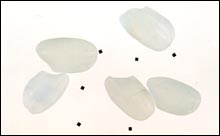
Electronic tagging
See: Implants
Human tagging
THE
NATIONAL ELECTRONIC VACCINE TRACKING REGISTRY BY
BARBARA LOE FISHER
[Media 2006] Use of Implanted Patient-Data Chips Stirs Debate on Medicine vs. Privacy
[May 2006] VERICHIP INJECTS ITSELF INTO IMMIGRATION DEBATE
[May 2005] Senate Bill 87: Expansion of Immunization Tracking System
[Media July 2005] Tommy Thompson to get RFID implant
June 16, 2005: Senators Bill Frist and Hillary Clinton Introduce New Legislation at GW Hospital
[BMJ 2004] FDA approves
implantable chip to access medical records
[Media 2004] FDA approves computer chip for humans Oct. 13, 2004 FDA approves computer chip for humans: Devices could help doctors with stored medical information ...The U.S. Department of Health and Human Services on Wednesday announced $139 million in grants to help make real President Bush’s push for electronic health records for most Americans within a decade. William A. Pierce, an HHS spokesman, could not say whether VeriChip and its accompanying secure database of medical records fit within that initiative. "Exactly what those technologies are is still to be sorted out," Pierce said. "It all has to respect and comport with the privacy rules."
Other
Euro bank
notes to embed RFID chips by 2005
A Chip In The Money Game
The company says the tiny "meu-chip" can be
embedded into paper in order to help authenticate a document, such as currency
or business contracts. The chip itself is a 0.4-millimeter square with a
thickness of only 60 microns (one micron is one millionth of a meter). When
connected to a tiny antenna, it can transmit a radio signal of about 30
centimeters. That's close enough for an external chip reader to determine if the
paper that the chip is embedded into is authentic or not.
 |
| Hitachi's meu-chip compared to
individual grains of rice. |